April 23, 2020: Dr. Gus Kousoulas, Principal Investigator of the Louisiana Biomedical Research Network (LBRN) that fosters biomedical research throughout Louisiana and supported by the NIH:NIGMS INBRE program, invites you to this follow up lecture given by Elia, Brodsky, CEO of Pine Biotech, Inc in collaboration with the Tauber Bioinformatics Research Center, University of Haifa, Israel and the Louisiana Biomedical Research Network (LBRN).
The topics that are covered in this lecture are:
-
Overview of Covid-19 genomic data, genome structure, genes/proteins and data properties (assembled vs reads, mutation types, amino acid changes).
-
Finding and Downloading a dataset of genomes from current and past corona virus outbreaks, different hosts and locations and learn to compare them in a meaningful way.
-
Interpreting analysis results - visualizing and making sense of genomic analysis by correlating change in sequence with functionality.
-
Comparison of the 3-dimensional structure and features of Spike (S) Glycoprotein encoded by SARS-CoV-2, SARS-CoV-1 and Bat coronaviruses.
This is a followup lecture to last week’s seminar below:
April 16, 2020: Dr. Gus Kousoulas, Principal Investigator of the Louisiana Biomedical Research Network (LBRN) that fosters biomedical research throughout Louisiana and supported by the NIH:NIGMS INBRE program, during his lecture on the Molecular & Cell Biology and Immunopathogenesis of coronaviruses revealed that the drug Nelfinavir mesylate (NFV; brand name Viracept), which was developed as a protease inhibitor in the treatment of the human immunodeficiency virus (HIV), caused a drastic inhibition of Spike (S)-mediated cell fusion (formation of multinucleated cells or syncytia) in cell culture experiments.
The S glycoprotein binds to the human angiotensin converting enzyme-2 (ACE2) through its receptor binding domain and causes fusion of the viral envelope with cellular membranes to facilitate virus entry, as well as fusion of infected cells with other uninfected cells (syncytia formation) to facilitate virus spread. Cell-to-cell fusion is a mechanism used by viruses to spread to other cells without being exposed to extracellular spaces and neutralizing antibodies. Of particular importance to the results disclosed today by Dr. Kousoulas and Drs. Vladimir Chouljenko, Farhana Musarrat and Rafiq Nabi is that the S glycoprotein of the SARS-2 CoV associated with Coronavirus Virus Disease in 2019 (COVID-19) caused extreme cell fusion in comparison the S Glycoprotein specified by SARS CoV associated with a limited epidemic in 2003. This substantial difference, most likely, contributes to the drastic increase in the virulence and pathogenicity of the new SARS-2 CoV in comparison to the 2003 SARS CoV. Nelfinavir was able to inhibit S-mediated membrane fusion at micromolar levels that are typically used in human patients to combat HIV infections. Molecular binding experiments performed via computational modeling by Dr. Seetharama Jois and graduate student Achyut Dahal at the University of Louisiana Monroe (member institution of the Louisiana Biomedical Research Network) revealed that Nelfinavir may bind directly to the S glycoprotein, thereby inhibiting S-mediated cell fusion and virus spread. These results suggest that Nelfinavir should be investigated for ability to prevent virus spread during early stages of SARS-2 CoV infections.
For Louisiana COVID-19 information you can visit our LBRN COVID-19 Page
